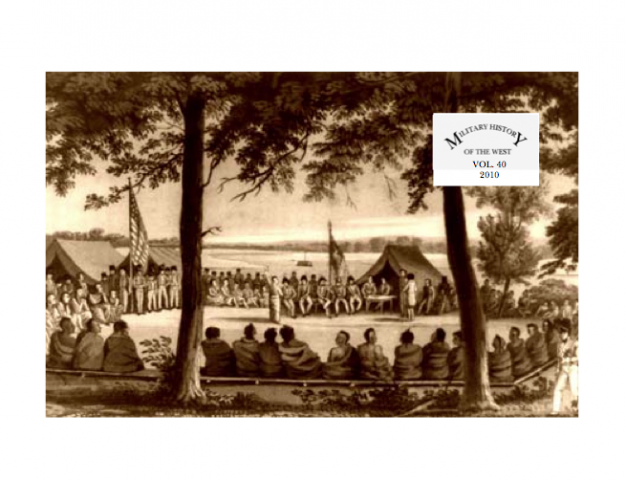Vol. 40, 2010
- Vol. 19, No. 1, 1989
- Vol. 21 (Fall 1991), No. 2
- Vol. 21 (Spring 1991), No. 1
- Vol. 22 (Fall 1992) No. 2
- Vol. 22 (Spring 1992), No. 1
- Vol. 23 (Fall 1993), No. 2
- Vol. 23 (Spring 1993), No. 1
- Vol. 24, No. 1, Fall 1994
- Vol. 24, No. 2, Fall 1994
- Vol. 29, No. 1, Spring 1999
- Vol. 29, No. 2, Fall 1999
- Vol. 30, No. 1, Spring 2000
- Vol. 30, No. 2, Fall 2000
- Vol. 31, No. 1, Spring 2001
- Vol. 31, No. 2, Fall 2001
- Vol. 32, No. 1, Spring 2002
- Vol. 32, No. 2, Fall 2002
- Vol. 33, 2003
- Vol. 34, 2004
- Vol. 35, 2005
- Vol. 36, 2006
- Vol. 37, 2007
- Vol. 38, 2008
- Vol. 39, 2009
- Vol. 40, 2010
- Volume 19, No. 2, Fall 1989
- Volume 20 (Fall 1990), No. 2
- Volume 20 (Spring 1990), No. 1
- Volume 25, No. 1, Spring 1995
- Volume 25, No. 2, Fall 1995
- Volume 26, No. 1, Spring 1996
- Volume 26, No. 2, Fall 1996
- Volume 27, No. 1, Spring 1997
- Volume 27, No. 2, Fall 1997
- Volume 28, No. 1, Spring 1998
- Volume 28, No. 2, Fall 1998
- Indices
MILITARY HISTORY OF THE WEST 2010
Vol. 40, 2010
The March to Monterey (Tennessee) and the View from Chapultepec (Wisconsin): American Community
 Names and the Commemoration of the Mexican War by Douglas A. Murphy
Names and the Commemoration of the Mexican War by Douglas A. Murphy
Abstract: In the Mexican War era, hundreds of towns adopted named that recalled people and
places of this conflict. Residents believed they had witnessed a nation-shaping moment
and sought to establish the significance of their hometowns by linking them to this
event. Many of these towns faded along with memories of the war while others found
new ways to define themselves.
Key Words: Mexican War; town names; commemoration; memory.
U.S.--Mexican War Veterans and the Congressional Pension Fight by Michael Scott Van Wagenen
Abstract: When veterans of the U.S.-Mexican War attempted to secure service pensions in 1874,
Republican Congressmen accused them of attempting to give federal aid to former Confederates.
This led to a thirteen-year debate on Capitol Hill over the loyalty of the veterans
and their worthiness to receive federal assistance in their declining years.
Key Words: U.S.-Mexican War; Veterans; Military Service Pensions; United States Congress.
"It Was a Thing Whose Time Had Come": Texas Tech's Vietnam Center and Archive by Kelly E. Crager
Abstract: For over twenty years the Vietnam Center and Archive at Texas Tech University has
been collecting and preserving the history of the American experience in the Vietnam
War. This article examines the founding of the Center and Archive and explores its
ongoing efforts to preserve the history of the war.
Key Words: Vietnam Center and Archive; Vietnam War; Texas Tech University; archives; oral history;
Vietnam veterans.
Finding the Way and Fixing the Boundary: The Science and Art of Western Map Making
As Exemplified by William H. Emory and his Colleagues of the U.S. Corps of Topographical
Engineers by Rollie Schafer
Abstract: The accounts of U.S. Army topographers clearly illustrate the techniques and technology
used in the field to determine longitude and latitude precisely, the foundation of
accurate map making. Because William H. Emory's detailed observational notes, including
raw data, were published as appendices to his narratives, we can assess his topographical
accomplishments quantitatively and compare them to those of his contemporaries and
to modern standards. This paper describes the technology and methods used by the U.S.
Corps of Topographical Engineers during the Mexican War period and the challenges
they faced in making accurate scientific measurements in the field..
Key Words: U.S. Corps of Topographical Engineers; William H. Emory; John C. Frémont; Mapmaking.
